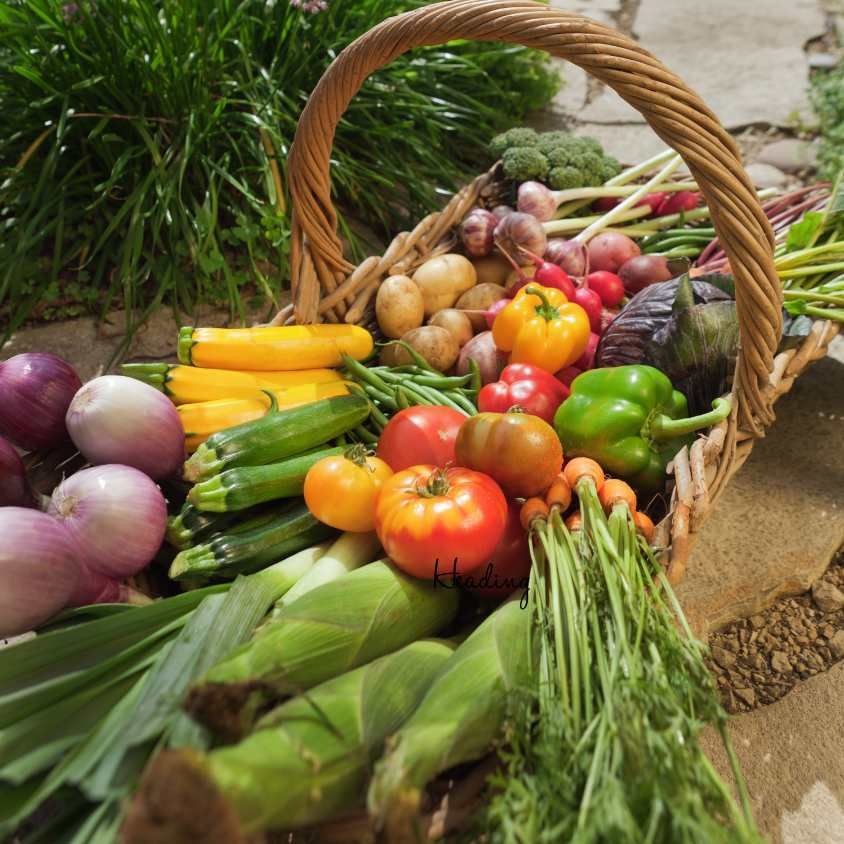
When we talk about survival gardening, we’re not just discussing a hobby or a way to pass the time. We’re talking about a lifeline – a way to ensure that, come what may, we can sustain ourselves and our loved ones with nutritious, home-grown food. It’s about resilience, self-sufficiency, and eco-conscious living. So, let’s roll up our sleeves and dig into the world of survival gardening with strategies that are as kind to the earth as they are effective.
Key Takeaways
Identify a sunny, well-drained location for your survival garden to maximize growth potential.
Select climate-resilient and high-yield crops to ensure a robust and sustainable food supply.
Implement eco-friendly irrigation practices, such as rainwater harvesting and drip irrigation, to conserve water.
Enrich your soil organically with compost and mulch to promote healthy plant growth without chemicals.
Learn natural pest control methods to protect your garden without harming the environment.
Seeds of Resilience: Starting Your Survival Garden
Starting a survival garden begins with the seeds – the very essence of life in your garden. Opt for heirloom and non-GMO seeds that have stood the test of time and can be saved year after year, ensuring a continuous food supply. Choose a variety of seeds that can provide a balanced diet and that are known for their hardiness and adaptability to changing conditions.
Heirloom tomato varieties for their rich flavor and nutritional value.
Leafy greens like kale and spinach, which are packed with essential vitamins.
Root vegetables such as carrots and potatoes that store well and are versatile in cooking.
Legumes like beans and peas for their protein content and nitrogen-fixing abilities.
Remember, diversity in your garden equals resilience. A mix of crops not only ensures a balanced diet but also reduces the risk of total loss from pests or diseases.
Finding the Perfect Location
Every plant needs a good home, and for a survival garden, the location is everything. Look for a spot that gets plenty of sunlight – at least six hours a day – as this is crucial for photosynthesis and the overall health of your plants. You’ll also want to make sure the site has good drainage to prevent waterlogging, which can spell disaster for your crops.
Most importantly, think about accessibility. Your garden should be easy to reach for regular maintenance and harvesting. If you’re in an urban setting, don’t despair; container gardening on balconies or rooftops can be incredibly productive.
Choosing Climate-Resilient Plants
Climate change is making weather patterns increasingly unpredictable, so selecting plants that can withstand extreme conditions is vital. Go for varieties that are drought-tolerant, frost-resistant, or heat-tolerant, depending on your local climate. This might include:
Sweet potatoes, which can thrive in hot and dry conditions.
Swiss chard, as it can handle both cool temperatures and heat.
Okra, known for its love of warmth and its ability to grow in high temperatures.
By choosing the right plants, you’re not just planning for a season; you’re planning for sustainability and long-term food security.
Water Wisdom: Eco-Friendly Irrigation Practices
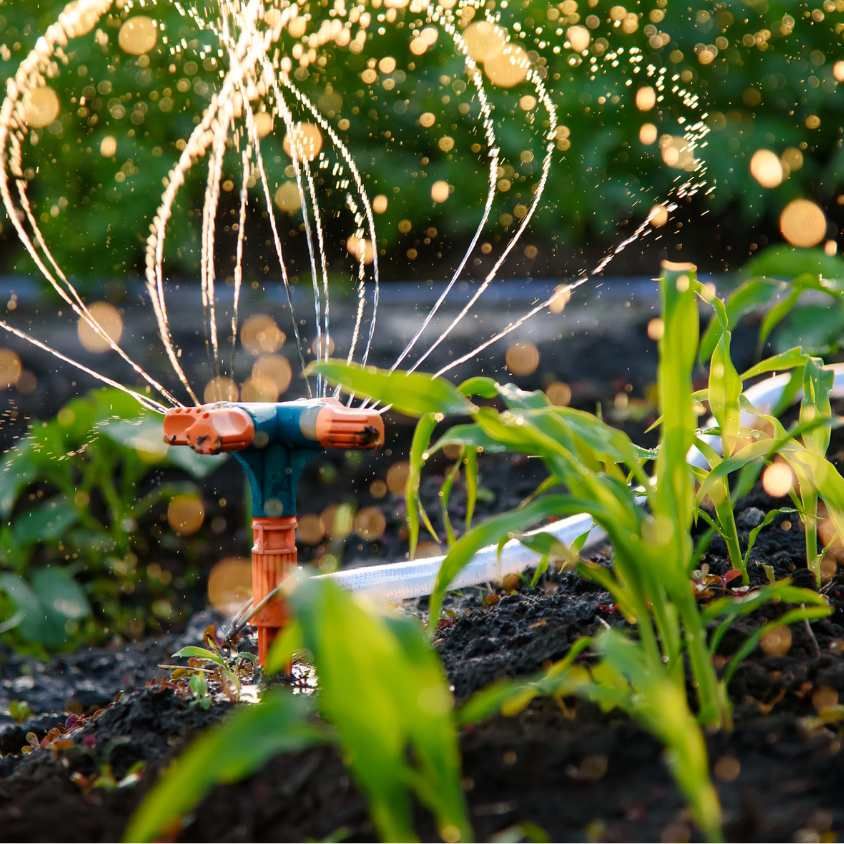
Water is the lifeblood of any garden, and in a survival scenario, it becomes even more precious. The key is to use water wisely, minimizing waste and maximizing efficiency. Eco-friendly irrigation practices are not just good for the planet; they’re essential for the long-term viability of your garden.
Maximizing Rainwater Use
One of the simplest and most effective ways to conserve water is by harvesting rainwater. Set up rain barrels or a cistern to collect rainwater from your roof. This not only reduces your water bill but also provides your plants with chemical-free hydration. When you water your plants, do so early in the morning or late in the evening to reduce evaporation.
Drip Irrigation Systems for Efficiency
Drip irrigation is a game-changer for survival gardening. It delivers water directly to the roots of your plants, where it’s needed most, and reduces water loss from evaporation and runoff. A simple drip system can be set up using a timer and some basic supplies from your local hardware store.
With these strategies in place, you’re well on your way to creating a survival garden that not only survives but thrives. Stay tuned for the next steps in this journey, where we’ll delve into organic soil enrichment, natural pest control, and more. Remember, every seed planted is a step towards a greener, more resilient future.
Natural nurturing goes beyond just planting seeds; it’s about creating an ecosystem where plants can flourish. The foundation of a robust survival garden is the soil. Healthy soil leads to healthy plants, which are more resilient to pests and diseases. This is where organic soil enrichment comes into play.
Using Mulch to Improve Soil Health
Mulch is a gardener’s best friend. It conserves moisture, keeps weeds at bay, and as it breaks down, it feeds the soil with nutrients. Organic mulches like straw, grass clippings, or shredded leaves can be layered around your plants. Over time, these materials decompose, adding to the richness of your soil, fostering a habitat for earthworms and beneficial microbes. Therefore, mulching isn’t just a strategy; it’s a commitment to the ongoing health of your garden.
Pest Control: Protecting Your Garden Sustainably
When it comes to pest control, the eco-conscious gardener’s mantra is ‘prevention is better than cure.’ By creating a balanced ecosystem in your garden, you encourage natural predators to take care of pest problems for you. This means less work for you and no harmful chemicals in your food or the environment.
Identifying Beneficial Insects
Beneficial insects are the unsung heroes of the garden. Ladybugs feast on aphids, and lacewings tackle a variety of pests. To attract these allies, plant a diverse range of flowers and herbs. For example, marigolds are not just pretty; they’re also great at deterring nematodes and other pests. By understanding and nurturing these relationships, you create a natural defense system for your garden.
Homemade Organic Pesticides
Even with the best prevention, pests can still be a problem. But don’t reach for toxic sprays – you can make effective pesticides at home with ingredients like neem oil, soap, and water. A simple spray of soapy water can deter many soft-bodied insects without harming your plants or the environment.
Remember, the goal is not to create an insect-free garden, but to manage pests without upsetting the natural balance.
Harvesting and Storing: Ensuring Year-Round Food Security
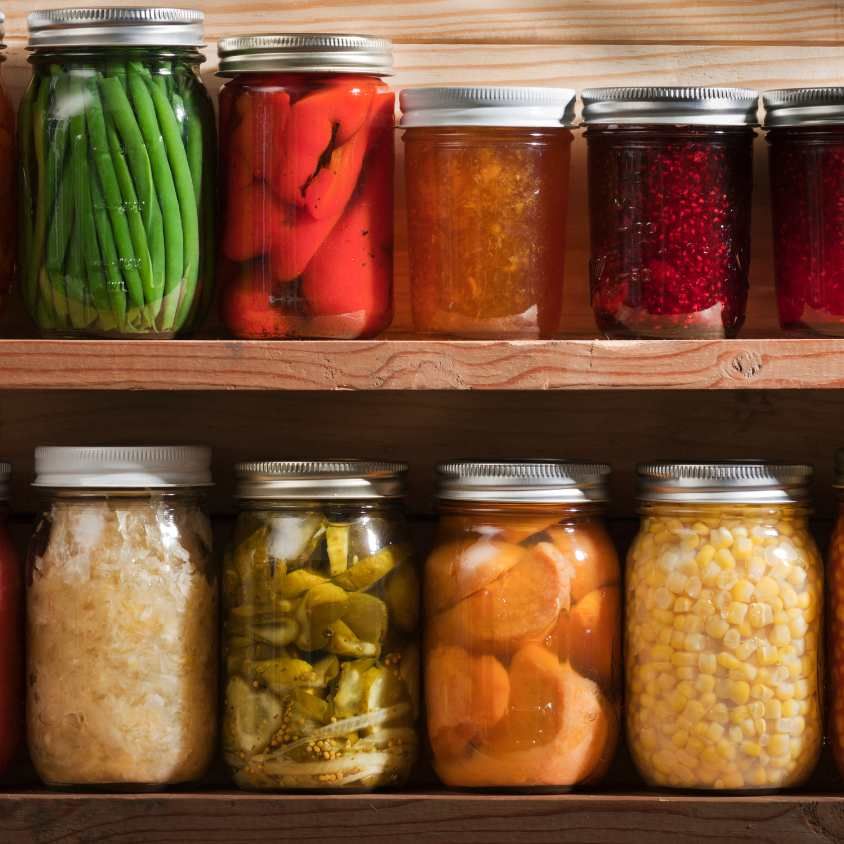
Harvesting your crops at the right time ensures maximum flavor and nutritional value. But it’s not just about enjoying the fruits of your labor now; it’s also about planning for the future. Properly storing your produce can provide you with a reliable food source all year round.
Root vegetables like carrots and potatoes can be stored in cool, dark places for months.
Drying herbs and beans is a simple way to preserve them.
Canning and pickling can turn your summer harvest into winter treats.
With a little effort, your garden can feed you even when it’s lying dormant under a blanket of snow.
Best Practices for Harvesting
Timing is everything when it comes to harvesting. Wait for the ‘peak of ripeness’ for fruits and vegetables to ensure the best taste and nutritional value. For leafy greens, morning is the best time to harvest, as they are crisp and full of moisture. Use sharp, clean tools to make clean cuts and minimize damage to the plants.
Techniques for Preserving Your Produce
Preserving your harvest extends the bounty of your garden throughout the year. Canning, freezing, and dehydrating are all effective methods for preserving different types of produce. Tomatoes can be turned into sauces and canned, berries can be frozen for smoothies, and apples can be dehydrated for a sweet, chewy snack.
Permaculture Principles: Cultivating Eco-Balance
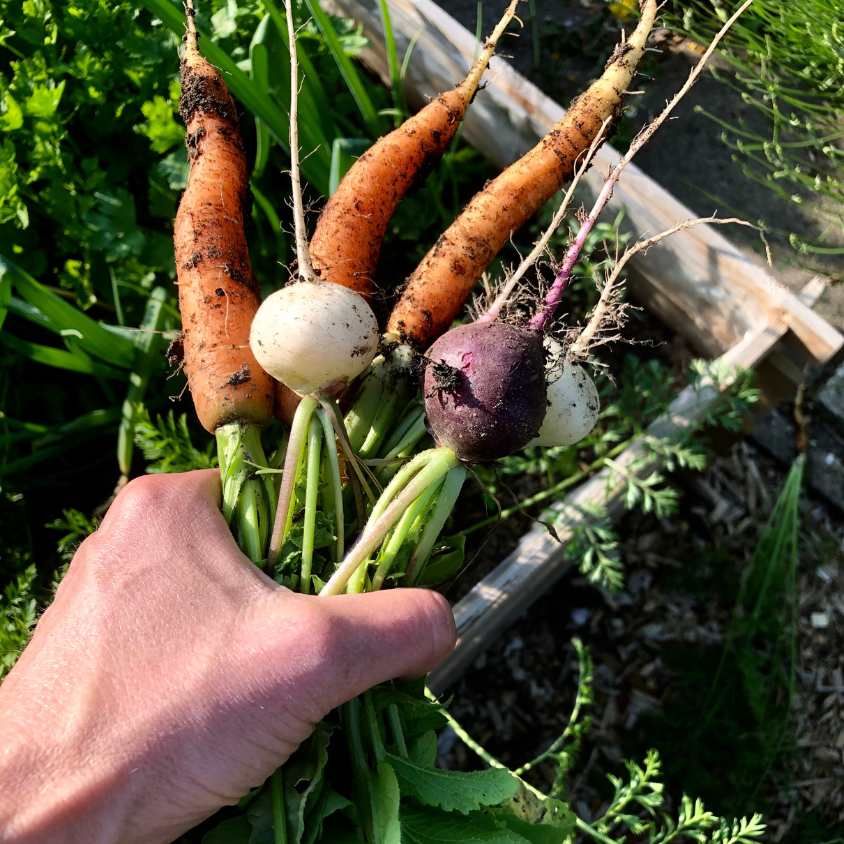
Permaculture is a philosophy that goes hand in hand with survival gardening. It’s about working with nature, rather than against it, to create sustainable and self-sufficient ecosystems. By applying permaculture principles, you can design a garden that not only produces food but also conserves resources and promotes biodiversity.
Use natural patterns and features to your advantage, like planting on a slope for natural water drainage.
Create ‘guilds’ of plants that support each other, like the ‘Three Sisters’ – corn, beans, and squash.
Implement a ‘no-dig’ policy to protect soil structure and the organisms that live within it.
Permaculture is a journey, not a destination, and each step you take brings you closer to a harmonious garden.
Integrating Crop Diversity
Just as a diverse ecosystem is more resilient, a garden with a variety of crops is better equipped to handle pests, diseases, and extreme weather. Intercropping, or planting different crops in close proximity, can improve soil health and reduce the need for fertilizers and pesticides. For example, planting nitrogen-fixing legumes alongside heavy feeders like corn can naturally replenish the soil.
As we wrap up this segment, remember that survival gardening is more than just a means to an end. It’s a way of life that connects us to the earth and to each other. It’s a statement that we are not helpless in the face of challenges, but empowered to grow, adapt, and thrive. So let’s continue to cultivate our gardens and our resilience, one plant at a time.
Now that we’ve covered the essentials of survival gardening, let’s address some common questions that might arise as you embark on your gardening journey. These are the practical bits of wisdom you’ll want to have in your back pocket.
Frequently Asked Questions
As you tend to your survival garden, you’re bound to have questions. Here are some answers to the most commonly asked queries.
What Are the Best Crops for Survival Gardening?
The best crops for survival gardening are those that are calorie-dense, nutrient-rich, and easy to grow in your specific climate. Some top picks include:
Potatoes for their high calorie content and storability.
Beans for their protein and ability to be dried and stored.
Kale for its nutrient density and cold-hardiness.
Squash for its long shelf life when cured properly.
Tomatoes and peppers for canning and versatility in meals.
These crops can provide a solid foundation for your food security needs.
How Can I Start a Garden with Limited Space?
Even if you’re working with limited space, you can still grow a substantial amount of food. Here are some strategies:
Utilize vertical space by installing trellises or shelves for climbing plants like beans and cucumbers.
Grow in containers or window boxes. Many vegetables, such as lettuce and radishes, have shallow roots and thrive in pots.
Practice square foot gardening, which maximizes production in small spaces.
With a bit of creativity, even the smallest balcony can become a lush, productive garden.
What Are Some Natural Ways to Fertilize My Garden?
Natural fertilizers are better for your plants and the environment. Here are some options: For more detailed strategies, consider exploring survival gardening hacks that can enhance your garden’s productivity naturally.
Compost adds nutrients and improves soil structure.
Worm castings are a rich, all-natural fertilizer that can be added to your soil mix.
Manure from herbivores (like cows and chickens) should be well-composted to avoid pathogens.
Green manure crops, like clover or alfalfa, can be grown and then turned into the soil to add nutrients.
These natural fertilizers will nourish your plants without the need for synthetic chemicals.
How Do I Manage Water Usage in a Survival Garden?
Managing water usage effectively is critical, especially in areas with water scarcity. For more detailed strategies, explore our guide on common mistakes to avoid when starting a survival garden, which includes water management tips.
Collect rainwater using barrels or a cistern system.
Use mulch to retain moisture in the soil and reduce the need for frequent watering.
Choose drought-tolerant plants that require less water.
Water plants early in the morning or late in the evening to minimize evaporation.
By being mindful of water usage, you can maintain a healthy garden even in dry conditions.
Can Survival Gardening Be done in Urban Areas?
Yes, survival gardening can be done in urban areas. You can utilize rooftops, patios, and even indoor spaces with the help of grow lights. Community gardens are also a great option if you don’t have personal outdoor space. Urban survival gardening may require some adjustments, but it is certainly possible and can be quite productive.
In conclusion, survival gardening is an empowering step towards self-sufficiency and resilience. By integrating these eco-friendly planting strategies and tips into your gardening practice, you’re not only ensuring food security for yourself and your loved ones but also contributing to a healthier planet. Remember, every action counts in the grand scheme of sustainability. Now, with your newfound knowledge and a garden waiting to bloom, you’re ready to grow into a greener future.
If you’re eager to start your own survival garden and are looking for quality seeds that can withstand the test of time, consider checking out the vast collection at Survival Essentials. With a wide range of heirloom seeds specifically curated for survival gardening, you’ll find everything you need to cultivate a thriving and resilient garden. Don’t hesitate to request a quote and take the first step towards securing your food independence today.





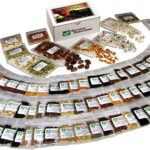

Leave a Reply